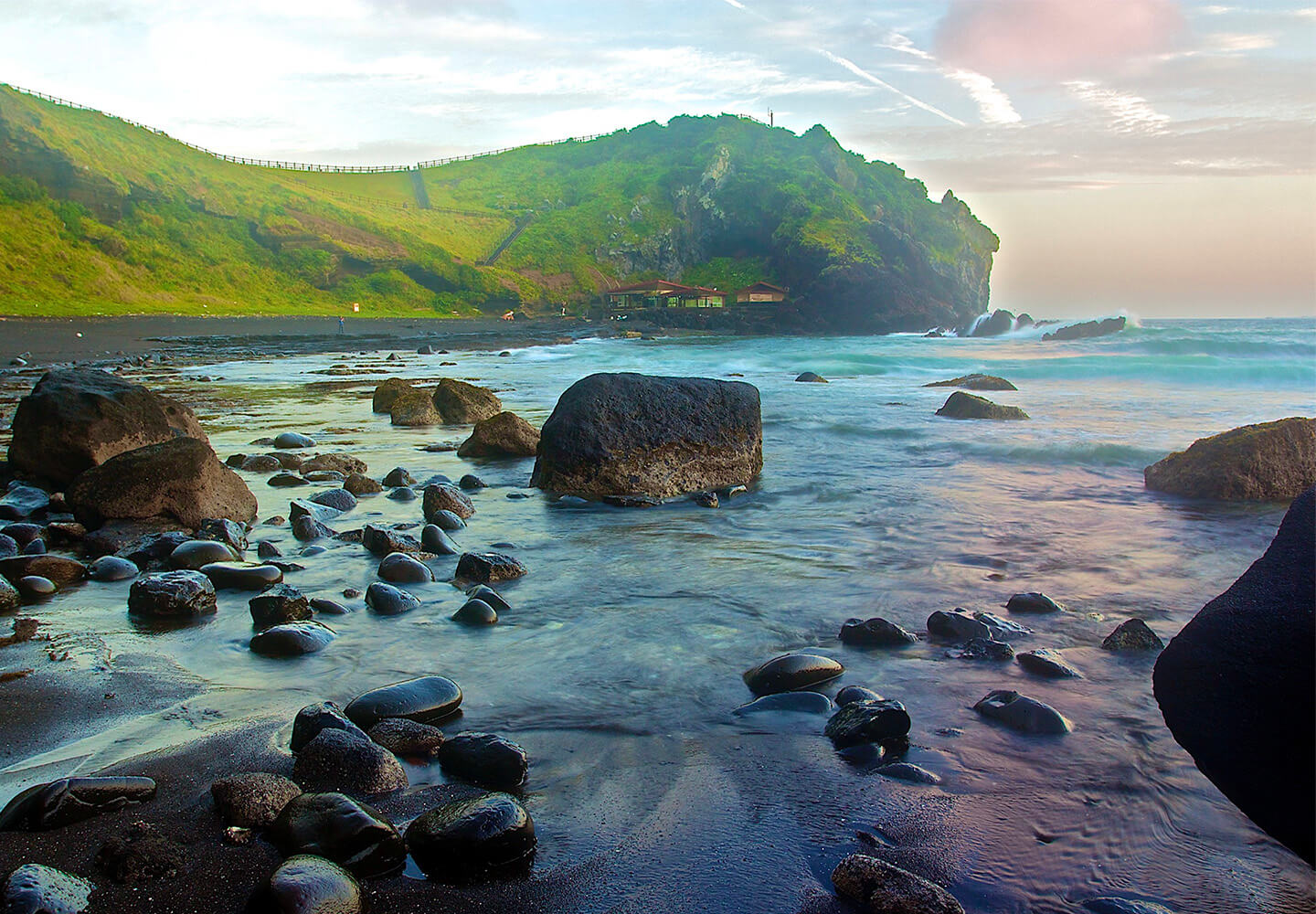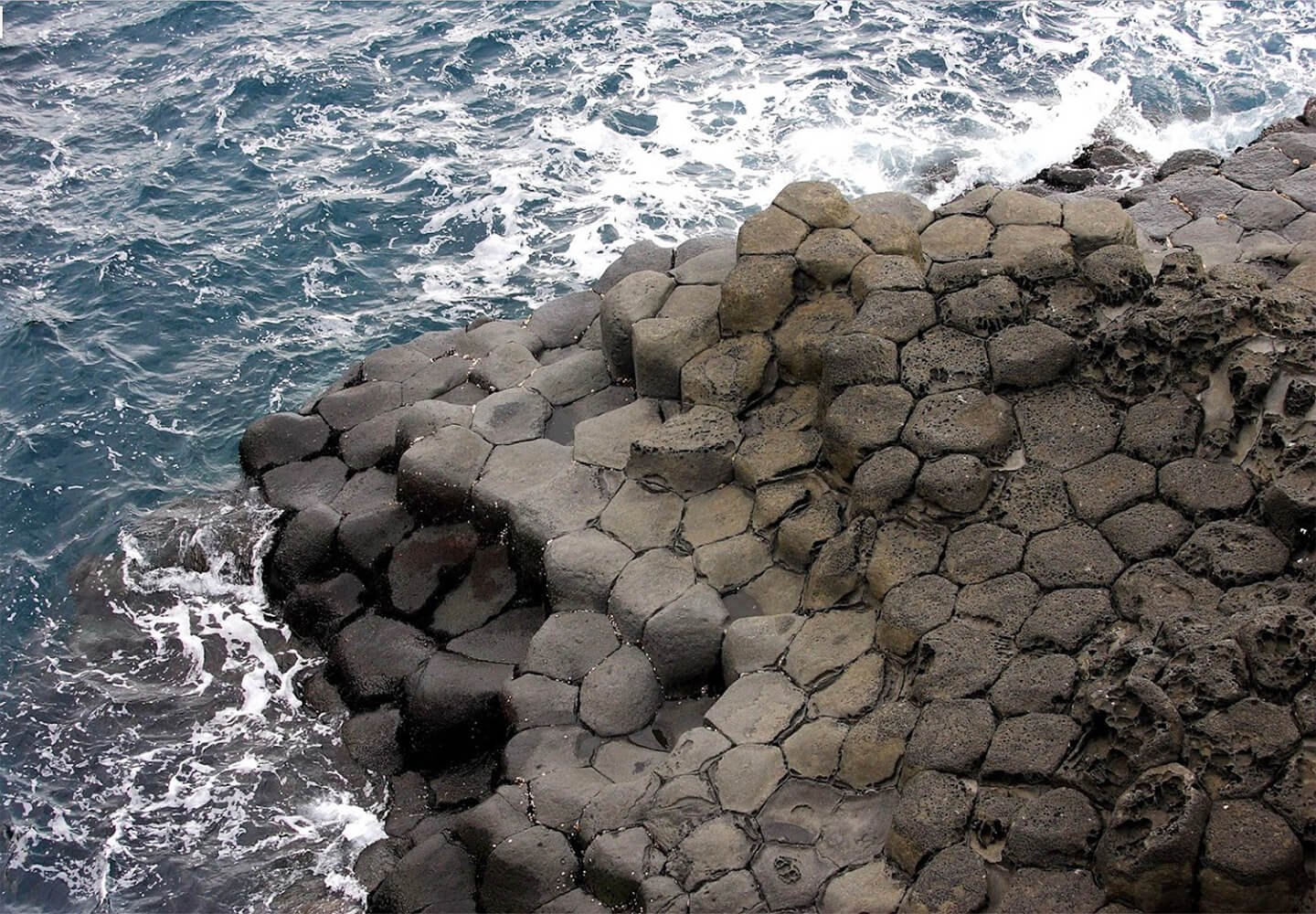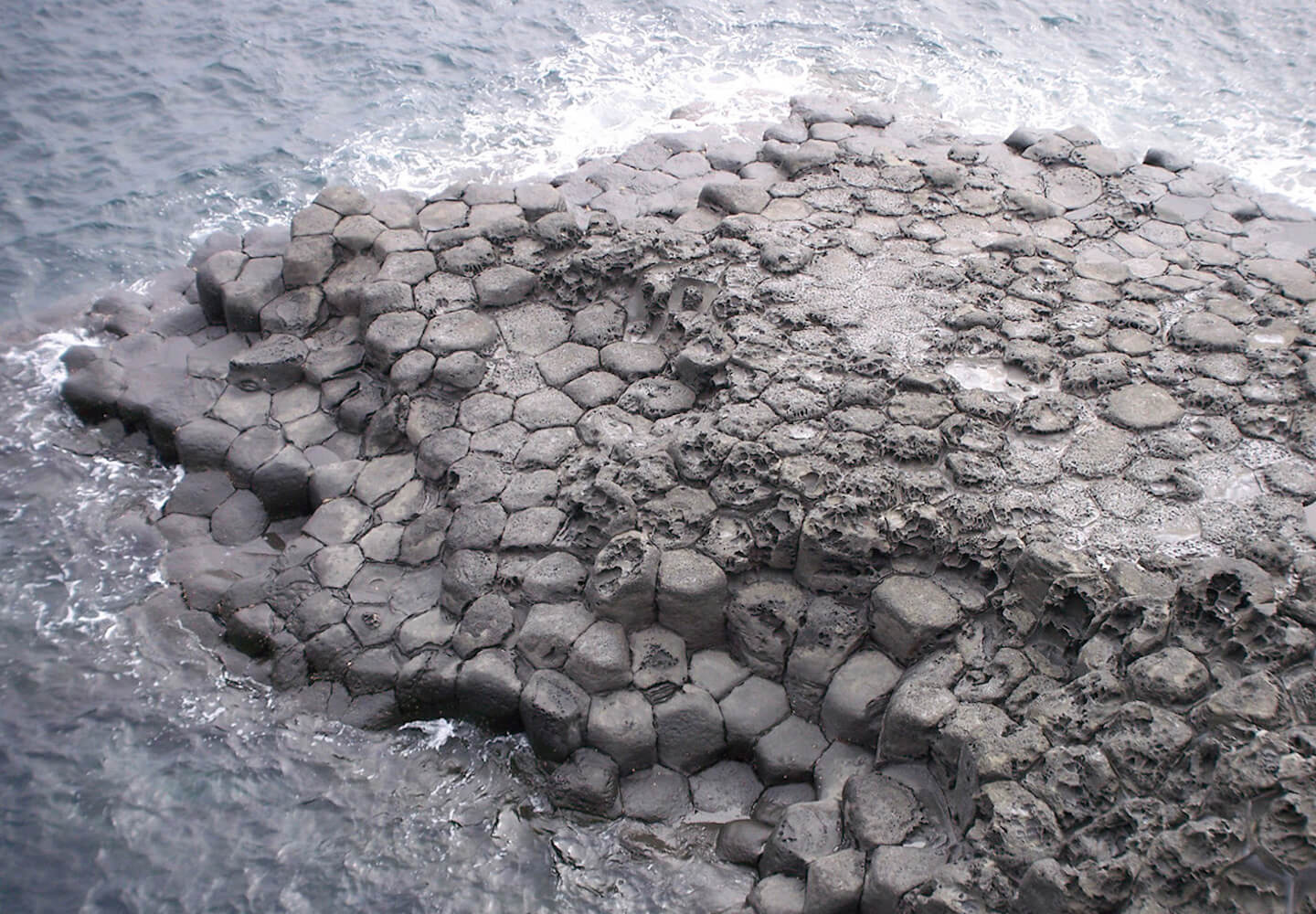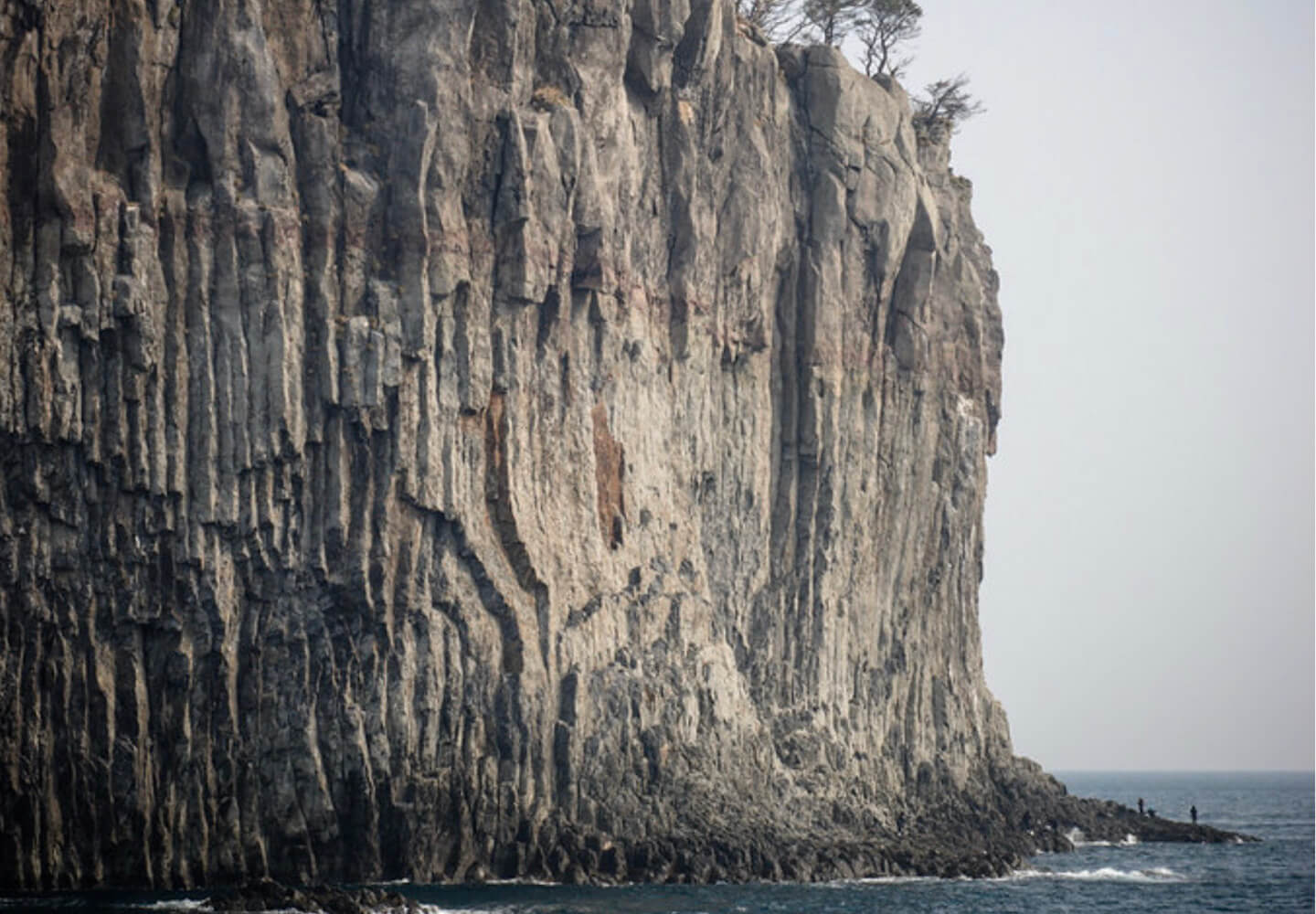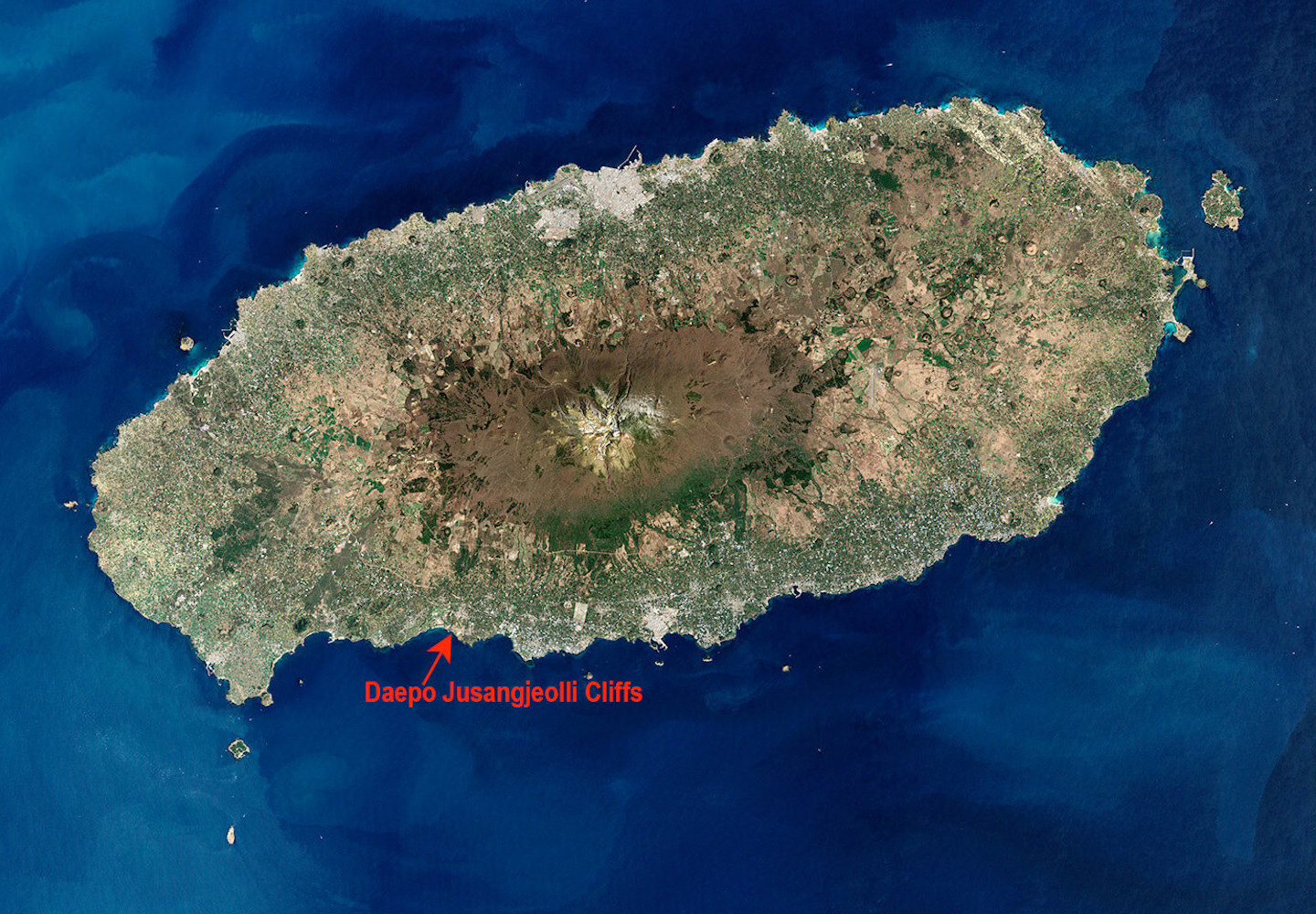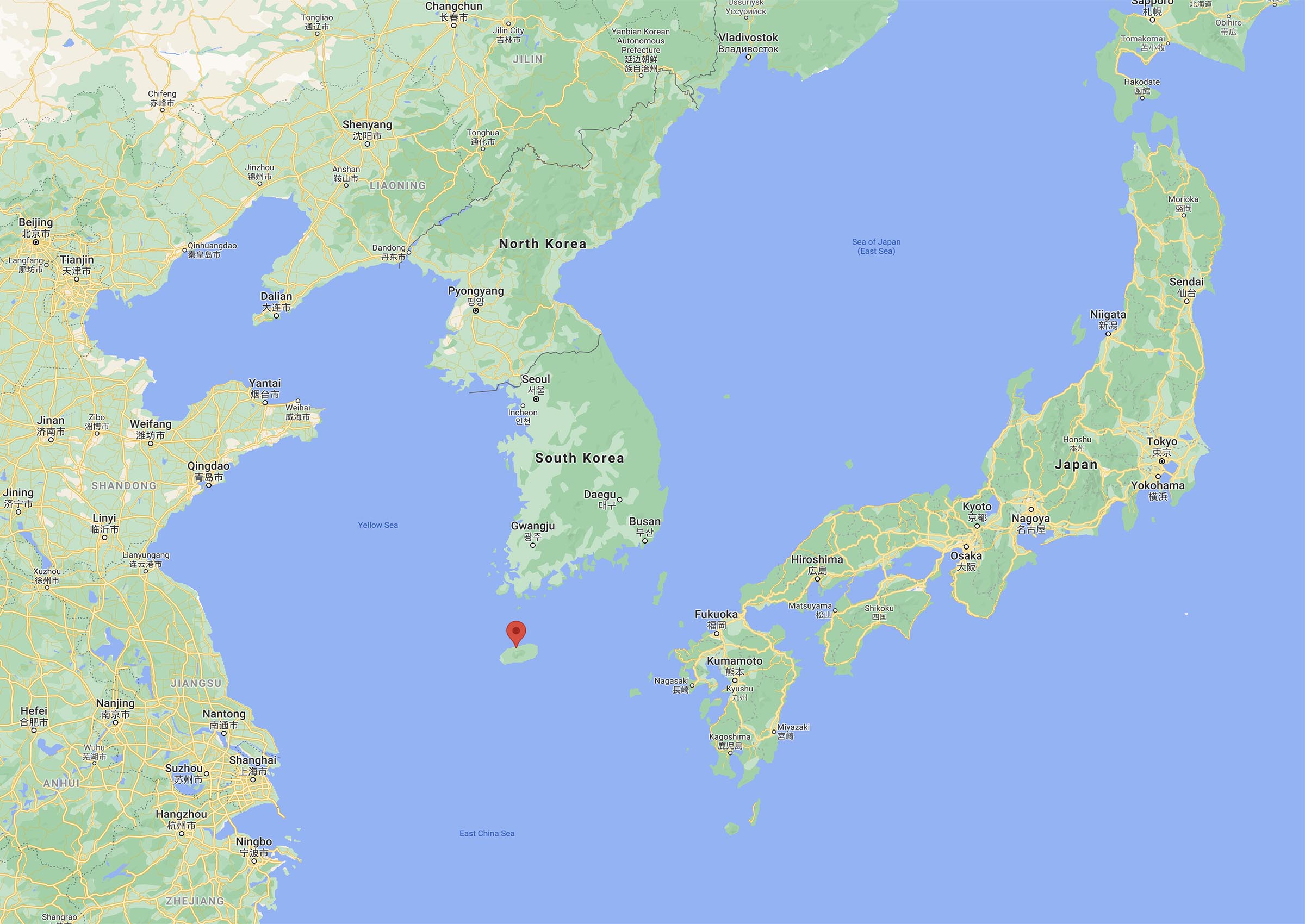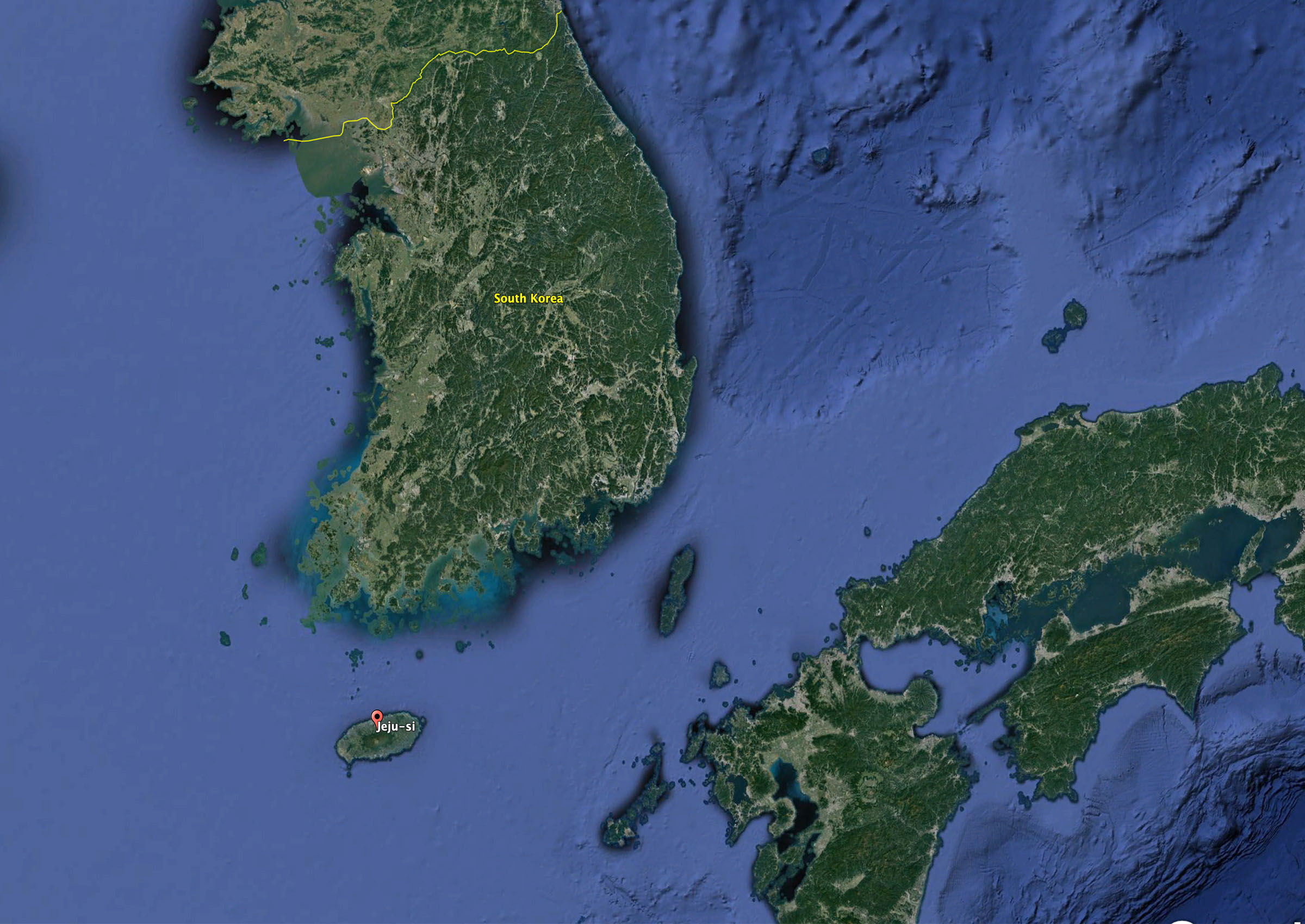
Jeju Island, a volcanic island situated off the southern coast of the Korean Peninsula, emerged 2.5 million years ago from convergence of the Pacific and Philippine Sea plate margins undergoing subduction beneath the Eurasian Plate. With a natural geology like none other in the world, this elliptical island is comprised of Holocene volcanic rocks resulting from several volcanic eruptions with the most recent occurring 5000 years ago. Its black and tan sand grains are of marine and geological origin.
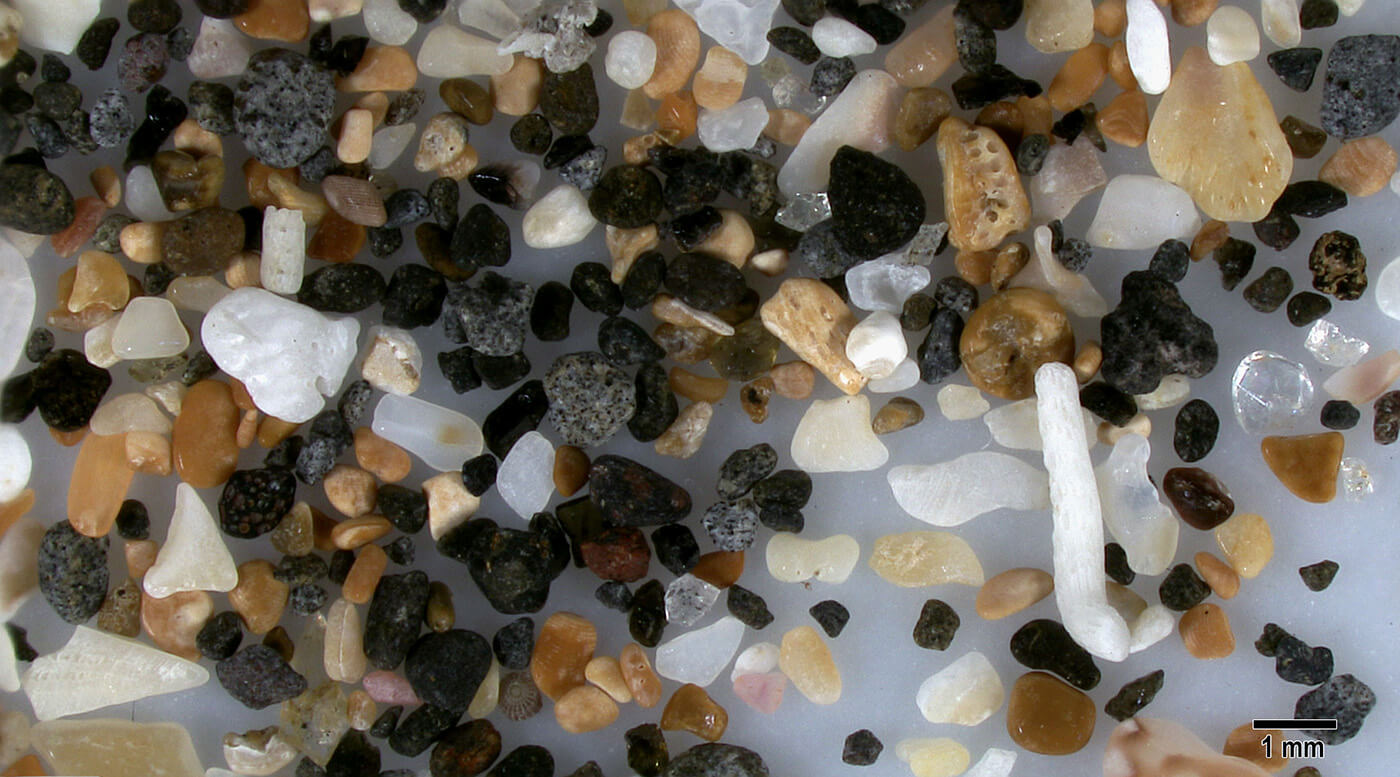
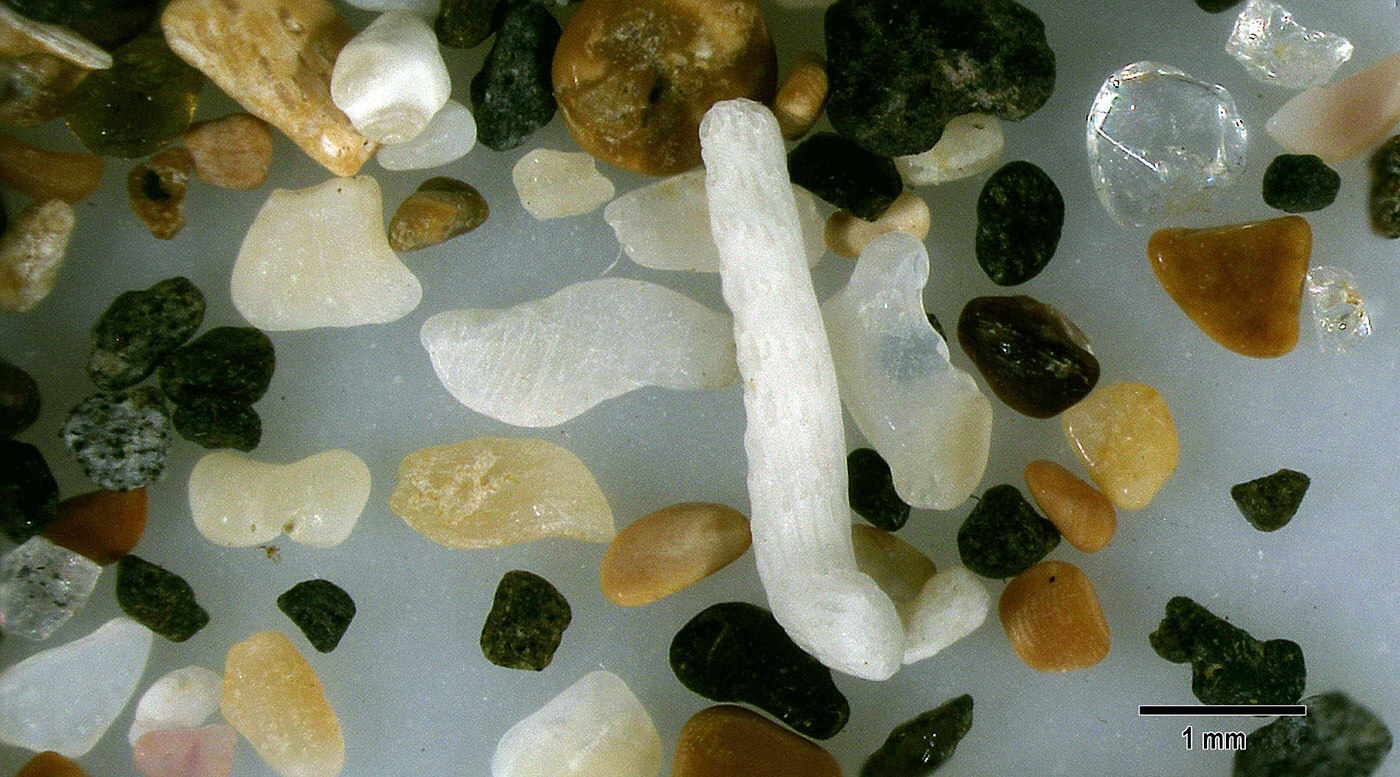
The lower magnification contains a mixture of black and gray stippled volcanic grains mixed with white and tan grain fragments of marine organisms. The higher magnification features a white elongated grain fragment of a bryozoan, light and darker tan and off-white grains from various mollusk shells and clear quarts grains in the upper right corner.
Geographic Overview
A satellite overview highlights the volcanic origin of Jeju Island. Sand samples were obtained near the Daepo Jusangjeolli Cliffs. These cliffs feature tall, mostly hexagonal, columns of basalt arising from the ocean floor. Basalt is a dark-colored, fine-grained extrusive igneous rock formed by rapid cooling of lava following an ancient volcanic fissure eruption.
Sand Gallery
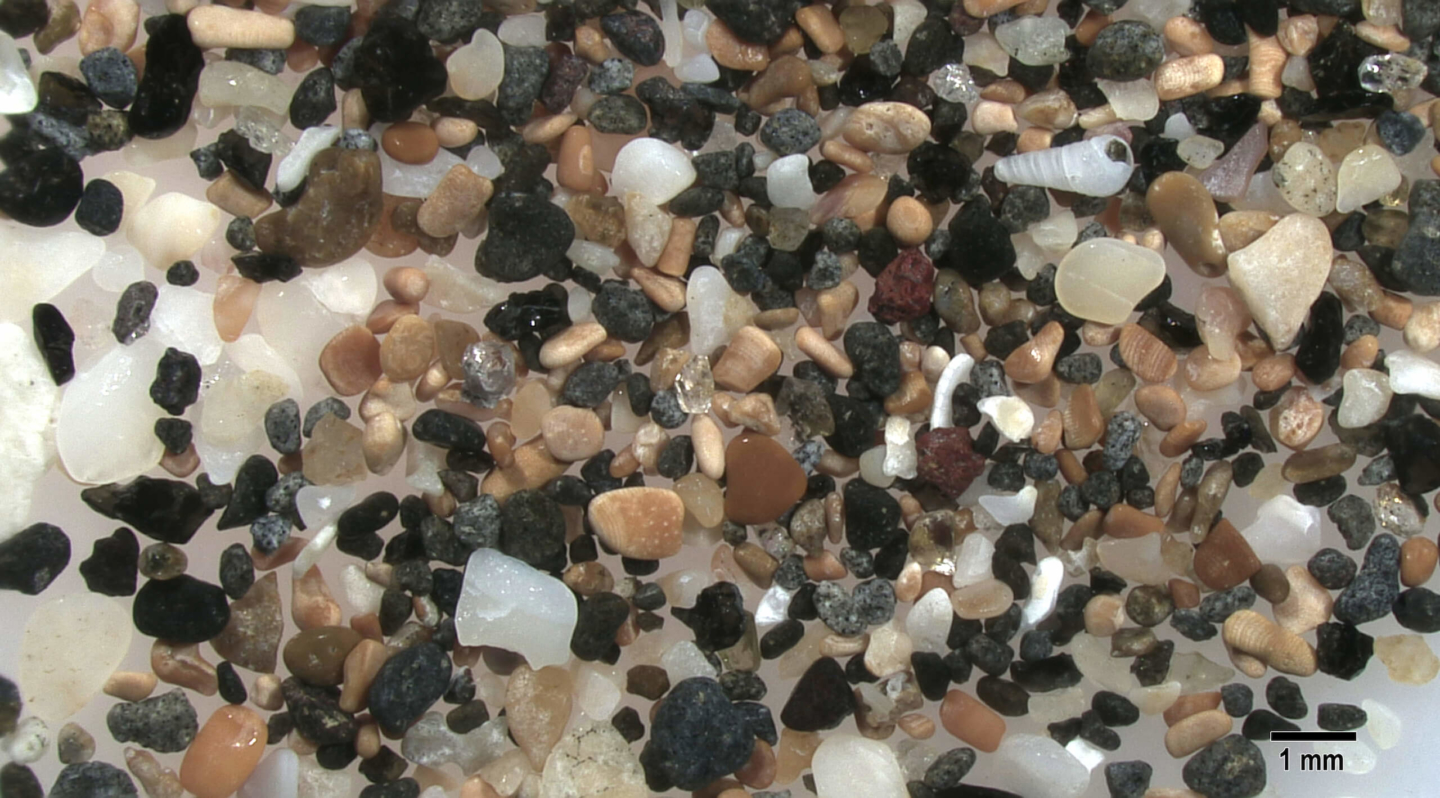
Different sized sand grains of volcanic and marine origin populate this microscopic image. An off-white microscopic spiral mollusk is present in the upper right.

Black and dark sand grains with rounded contours are of basalt and lava origin while light and darker tan and white grains are of marine origin. The white elongated grain just to the left of center is the skeleton of a bryozoan.
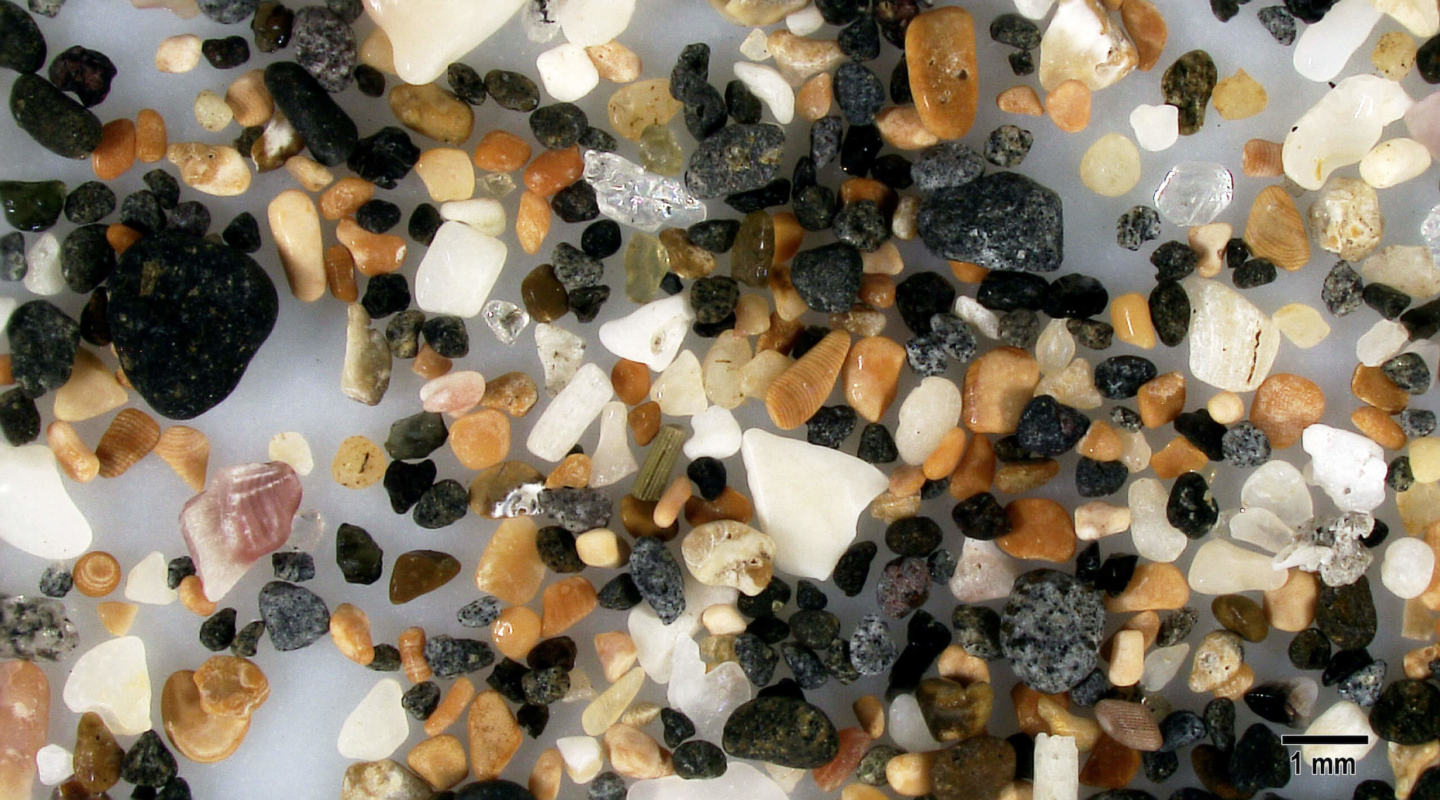
The black and dark gray sand grains represent the basalt and lava that makes up 90% of Jeju Island. White and tan grains of marine origin are intermixed with the volcanic sand grains.
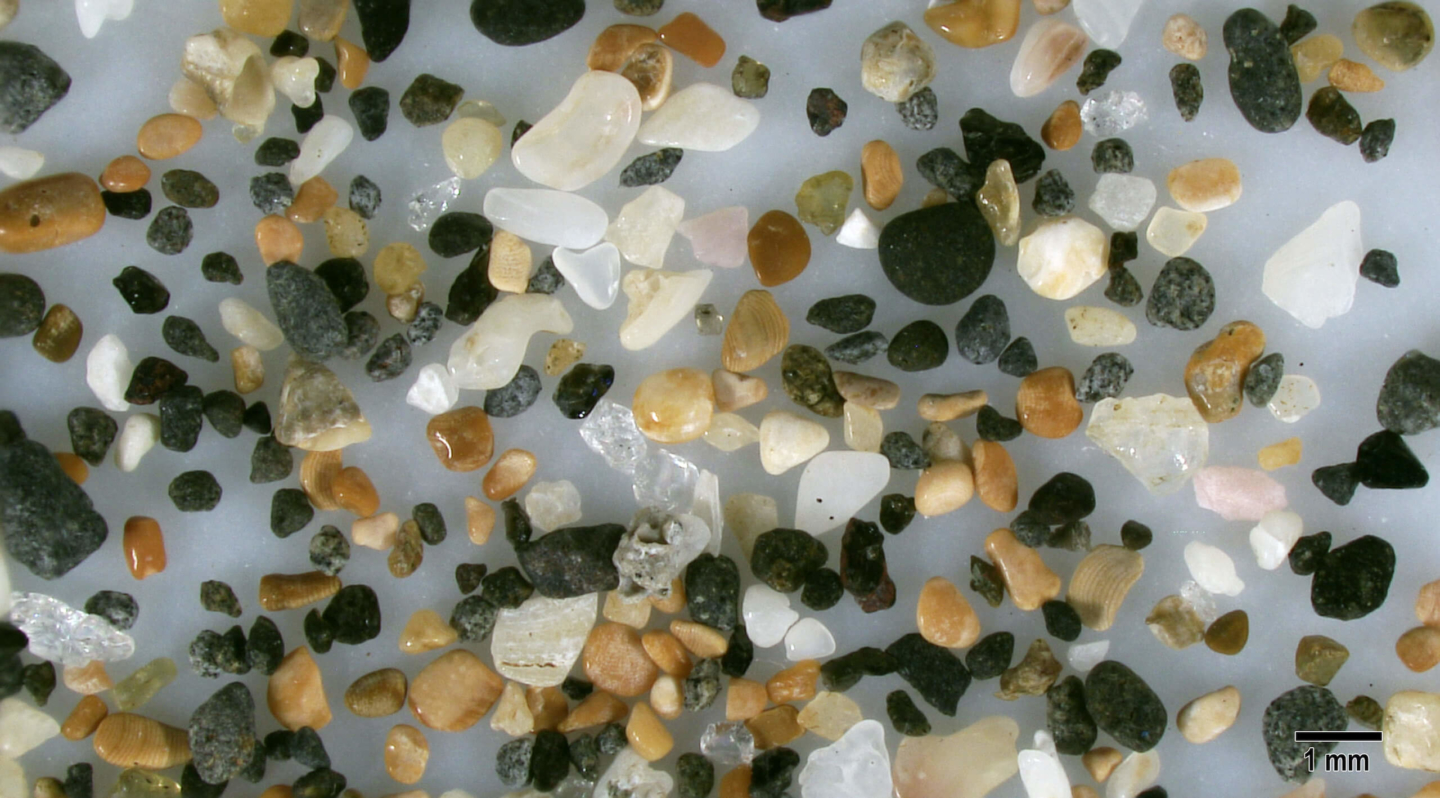
The dark sand grains as well as the tan and off-white grains are well rounded from years of wave action on the beach. Two clear quartz sand grains close to the center with more angular contours have not yet been worn smooth by weathering and wave action.
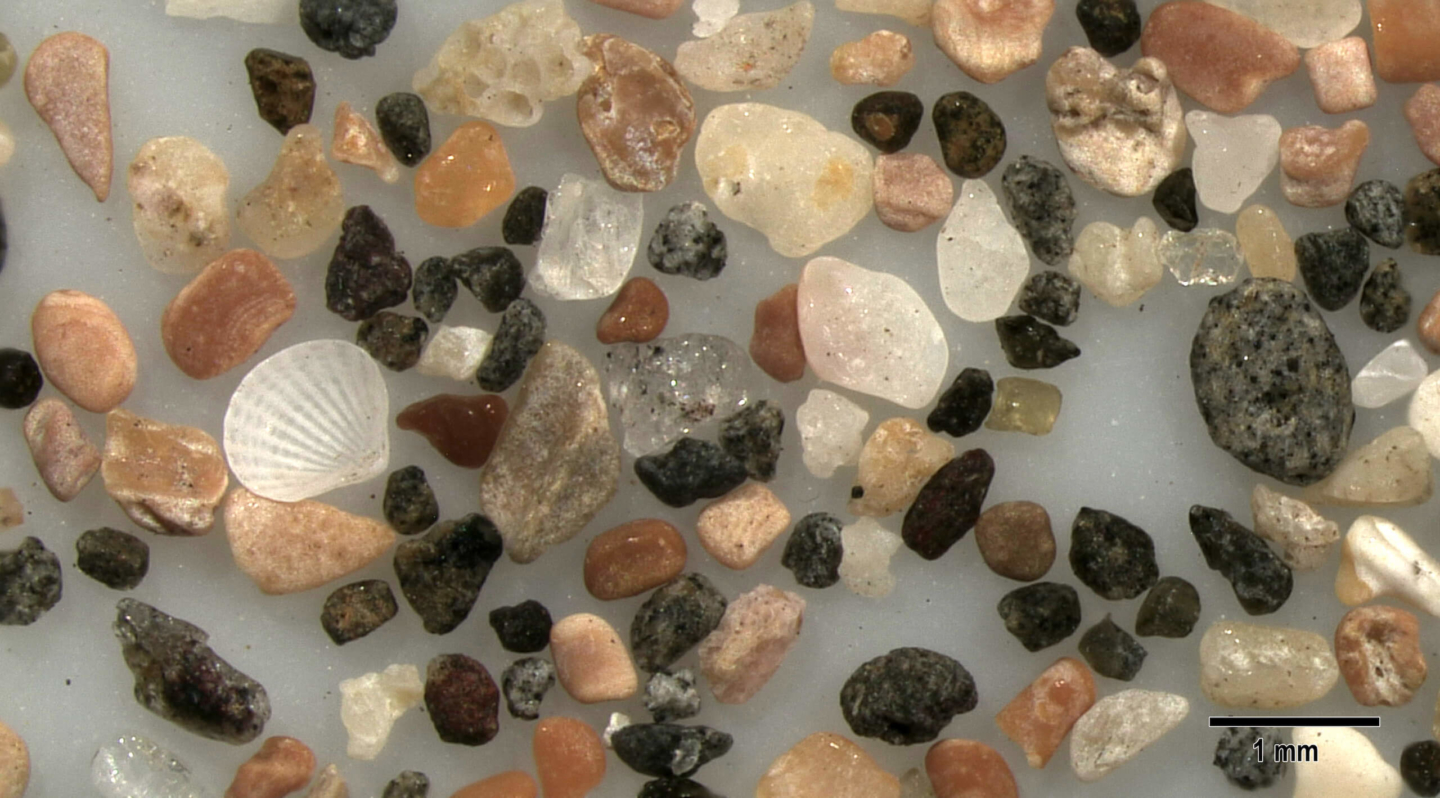
Black and gray with black stippling grains in this higher magnification photomicrograph are volcanic and most probably basalt. A clear quartz grain with black inclusions is present in the center and a well preserve 1 mm diameter mollusk shell is to the left of center.
